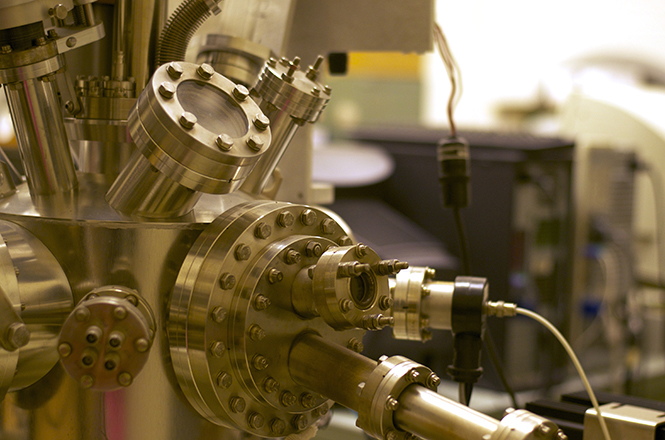NASA provides equipment for Kent State students
September 18, 2013
Kent State students now have the opportunity to work with a pair of million dollar instruments provided by NASA in Cleveland to examine atoms on surface materials.
Robert Pohlchuck, Kent State technology professor, helped obtain the x-ray photoelectron spectroscopy, which is used to eject electrons from the inner shell orbitals.
Previously, Pohlchuck, a Kent State alumnus, worked for NASA trying to build a vehicle to replace the space shuttle. He is now conducting research using the on-campus machines to find the purity of materials.
This XPS was originally built “to test samples that would be used as the outside of the vehicle that was set to replace the space shuttle,” said Pohlchuck.
However, he said the XPS now can test materials for other purposes than building a new space vehicle.
“We have small samples with objects clamped on, which are put in the XPS, and we can tell every single atom on the surface,” Pohlchuck said.
Pohlchuck, who helped to build this particular XPS instrument, now works with Jim Smith, a junior applied engineering major, to conduct research.
Both researchers contributed to getting the XPS running after it had been idle for more than a year because no one had taken the time to work with the instruments since they have arrived on campus.
Smith said he likes working in the lab with these instruments because it’s not something one gets to do everyday, and it will give him an edge in the job market.
“I enjoy learning how different parts of the instruments work,” Smith said.
Pohlchuck said he knew Smith had an excellent feel for the instruments after showing him the lab and seeing the excitement he had for the machine, before choosing him to be his student assistant.
In order to take samples, the chamber, located in the center of the XPS, must be completely empty of air. Pohlchuck said this is possible through ultra high vacuum systems, and without the air in the chamber, the beam can directly hit the sample.
Currently, the researchers are running samples of a pure powder and a manipulated powder for a local customer using Spectra, a test that can tell how much oxygen is in any given sample, said Pohlchuck.
Not only are they working on analysis, but they are also working on repairing the second instrument held in the lab.
The Auger spectroscopy instrument uses a beam source rather than an x-ray but has been dormant for the past three years because of a broken pump, Pohlchuck said.
“Our goal is to have the machine up and running by itself at the end of the semester,” said Smith, as the two began working on it Friday night.
Though future research plans could not be released, the researchers have a photo shoot planned for Tues. Sept. 24, so students can view the instruments.

























